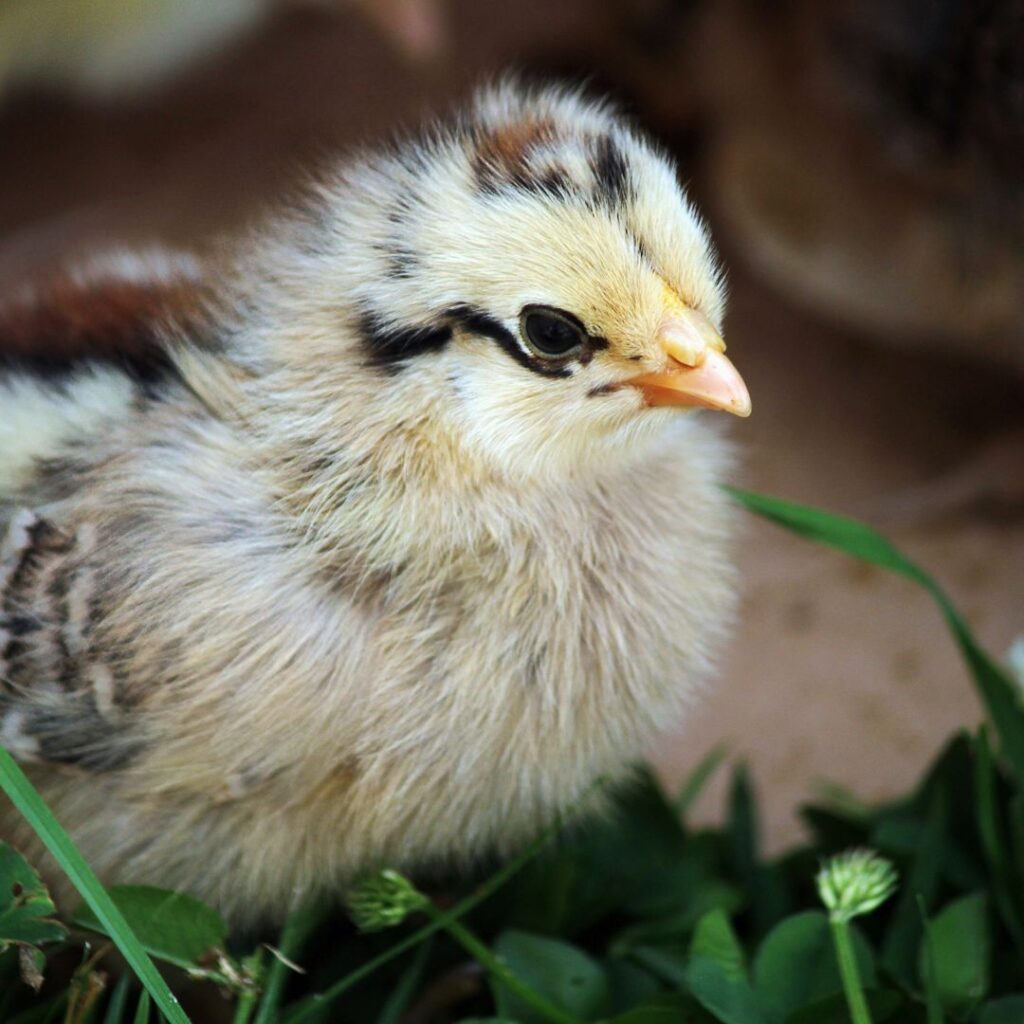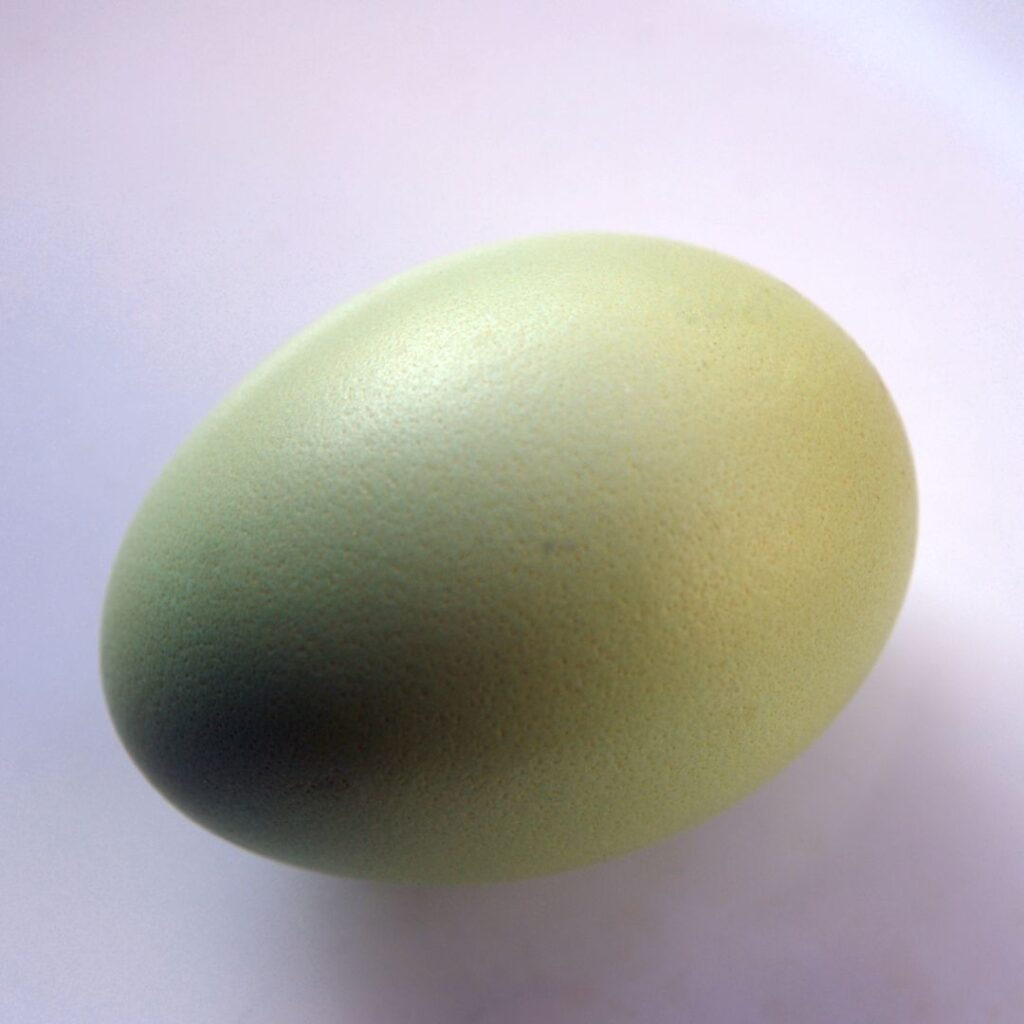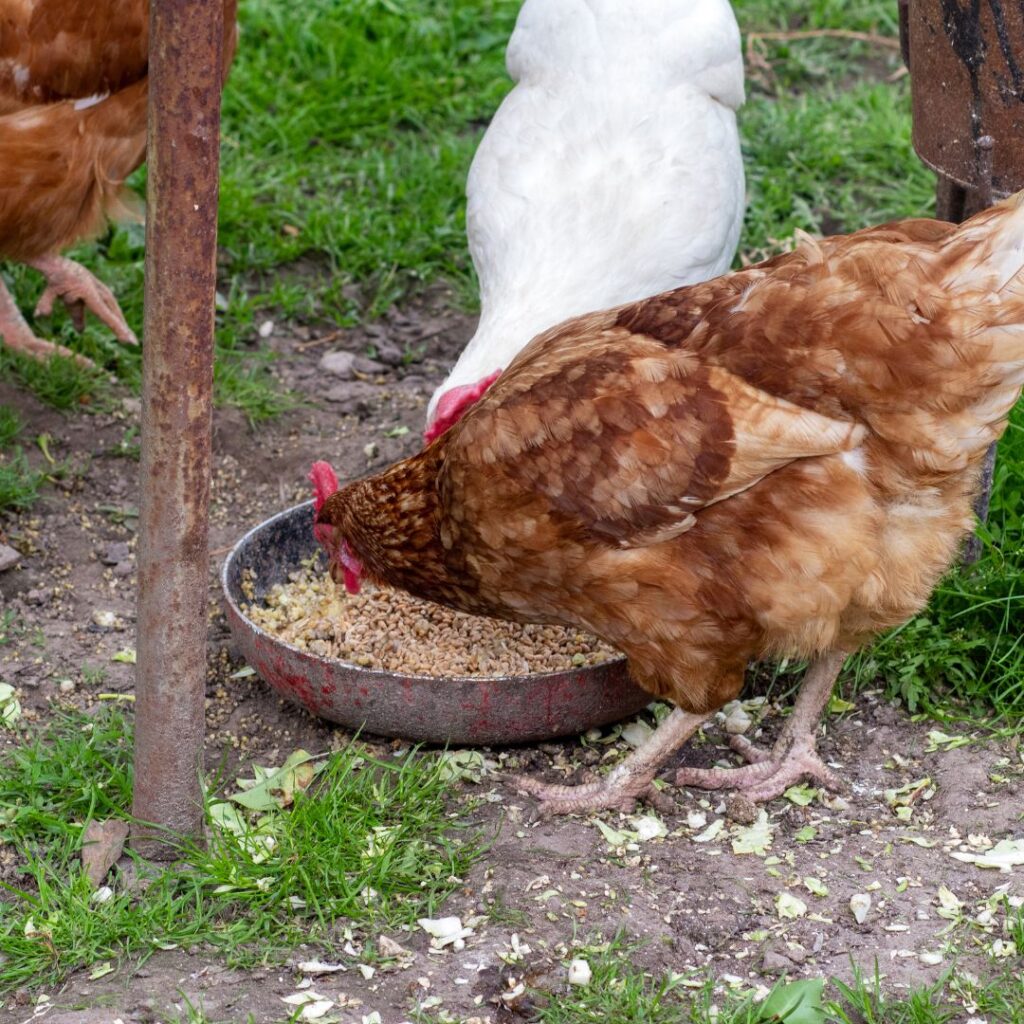If you’ve been considering getting into backyard chicken keeping, now is a great time to start planning! Raising baby chicks can be a rewarding experience, but if you don’t do it right, it can become a costly and heartbreaking venture.
Here are the main things you need to know about when is the best time to get and raise baby chicks.
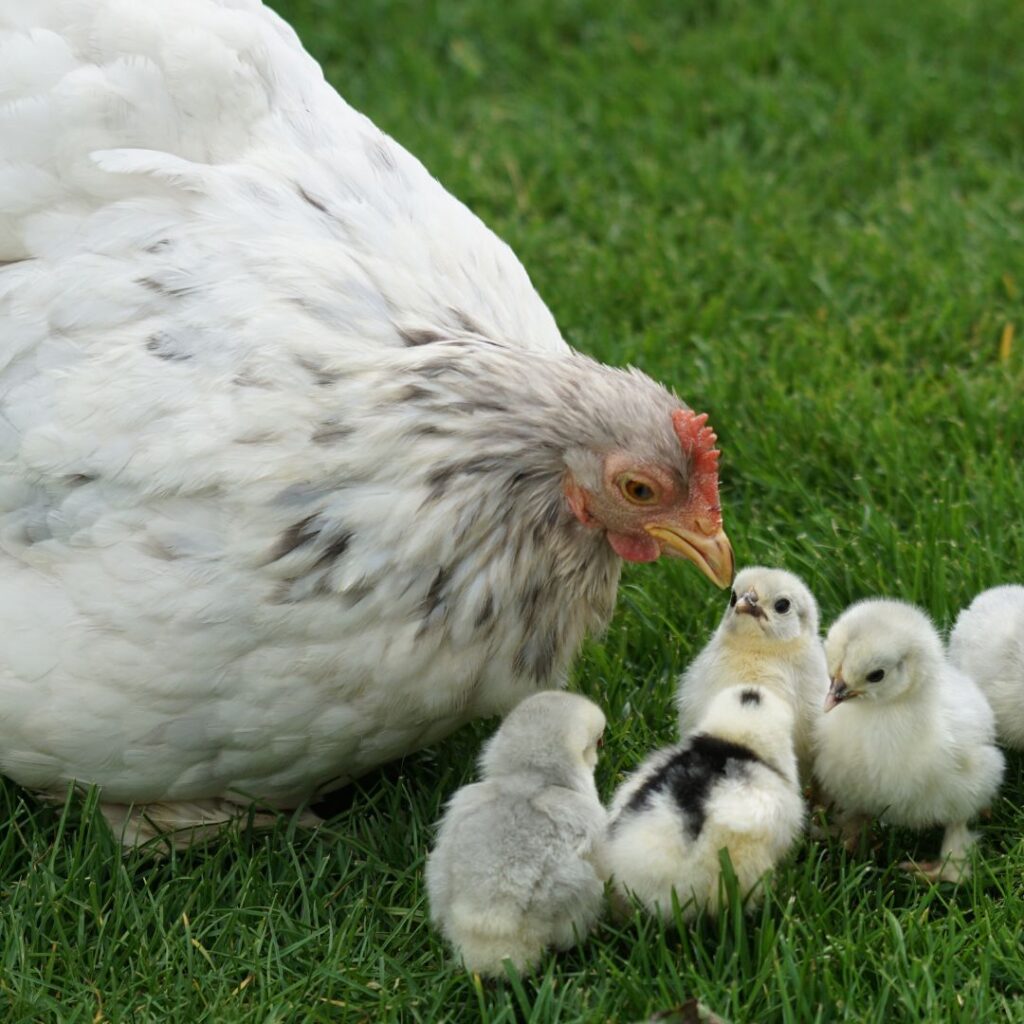
How old are baby chicks when shipped from a hatchery?
Baby chicks are shipped the same day the hens hatch eggs. They consume (ingest) the yolk inside the shell before hatching; this allows them enough nutrition to last a few days (approximately 72 hours).
Did you know that the U.S. post office is still the only authorized carrier to ship baby chicks in the U.S.? They are busiest shipping chicks during late winter through mid-spring (Feb – May). This hints at when the most varieties of chicken breeds are available.
Supplies You’ll Need To Have Before Chicks Arrive
You will need some basic supplies if you decide to raise baby chicks, including chick starter feed, waterers and feeders, bedding material, a source for heat, a thermometer, an outdoor pen or coop for them once they are old enough (six weeks), treats like mealworms or scratch grains and supplements such as vitamins or minerals recommended by your local feed supply store. Also, ensure that you always have fresh water for your flock throughout their life cycle since hydration is critical for healthy chickens.
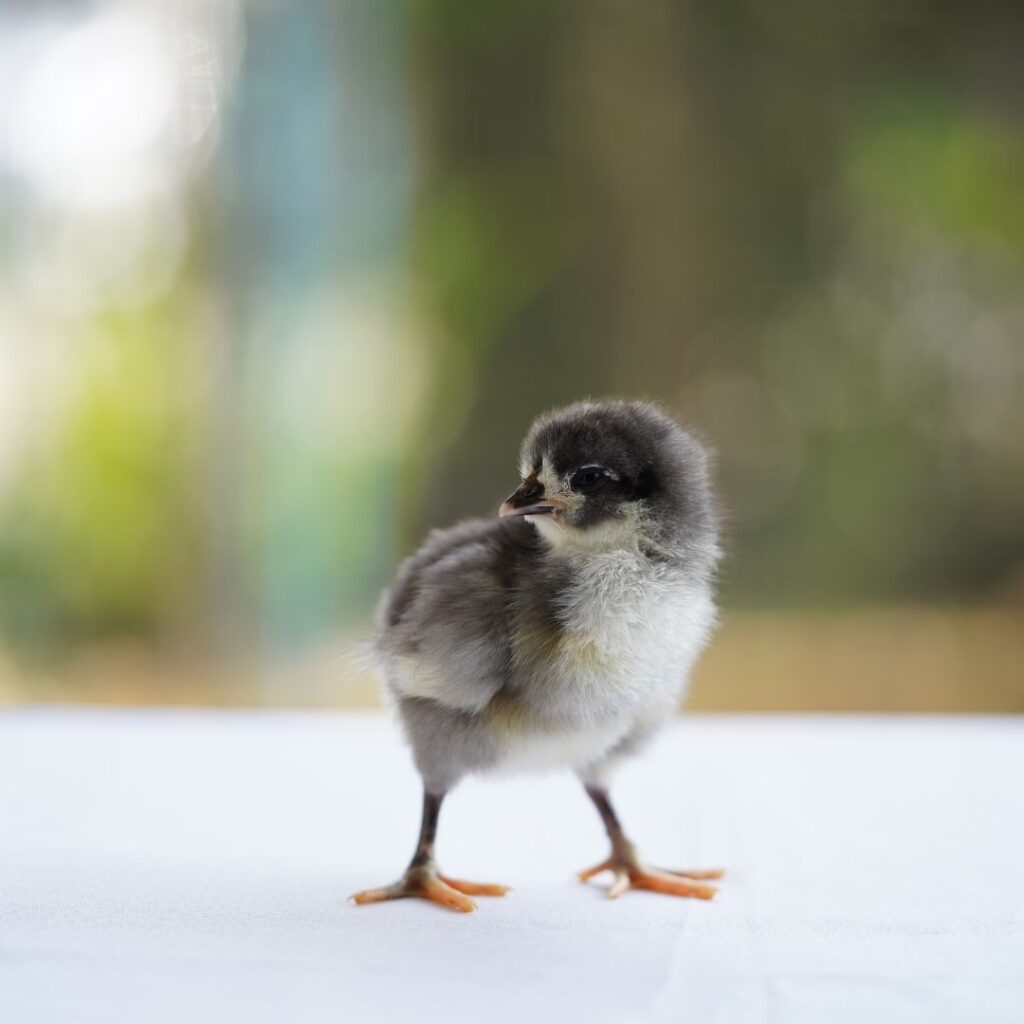
Brooder (the chick nursery)
Choosing a brooder for your new baby chicks is an exciting stage, valuable to ensuring the safety and health of your birds! Make sure it’s large enough that your chicks have plenty of space. A common rule of thumb is to use a brooder that offers 1.5 square feet per chick to meet their growing needs in the early weeks.
Fortunately, many chicken keepers find free or inexpensive options once they get creative–old clean tubs, kiddie pools, a plastic tote, dog crates, large bunny cages, or the all-time favorite cardboard box, etc., all make great brooders, so the babies are safe from escape or predators looking to get to your baby chicks.
With the right (and safe) environment, your chicks will be ready to leave their brooder before you know it.
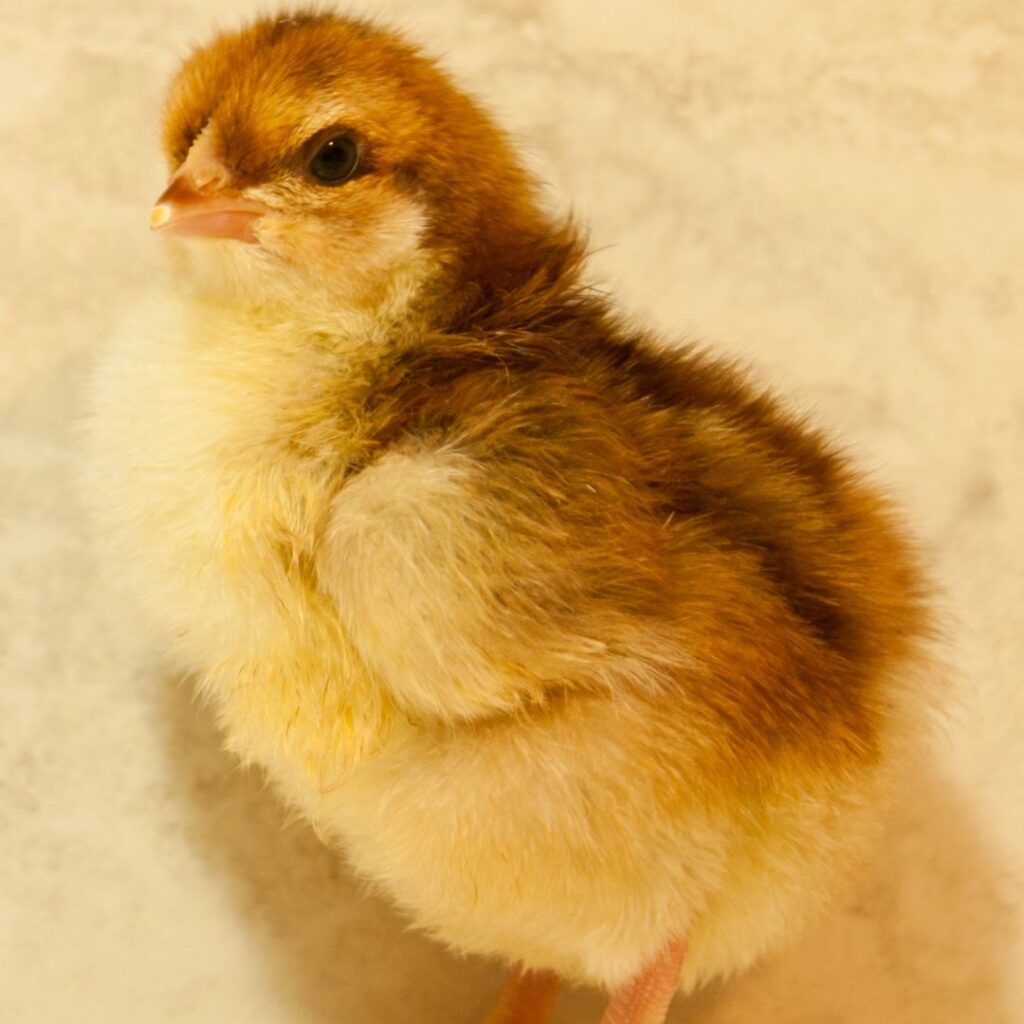
Heat Sources
Keeping your baby chicks under proper temperatures and comfy is essential for them to grow healthy and strong. A steady heat source is the best way to mimic a mother hen’s warmth when raising chicks on your own.
Old-time chicken keepers like us use a ‘red’ heat bulb with enough coverage to ensure all chicks have uniform warming. Temperature is adjusted by moving the light up a few inches at a time. Heat levels vary by how old chicks are, not by the breed.
Heat Lamps – To ensure your chicks’ safety, always secure the brooder heat lamp and its cord firmly in place to avoid any possibility of it falling into the brooder. I suggest getting a heat light with a bulb protector on the front to protect the heat bulb.
Lastly, put chicken wire or hardware cloth across the top of your brooder to catch the lamp if it falls. You can never be too safe with your baby chicks.
Chick Brooder Warmer– Investing in this type of heat for your chicks is a sound financial decision; it may be costly upfront, yet you’ll reap the rewards for years to come. It is the most dependable and safe heating option available, and you will save money compared to using a heat bulb.
With a reliable heat source and the right temperature, your chicks will thrive in no time.
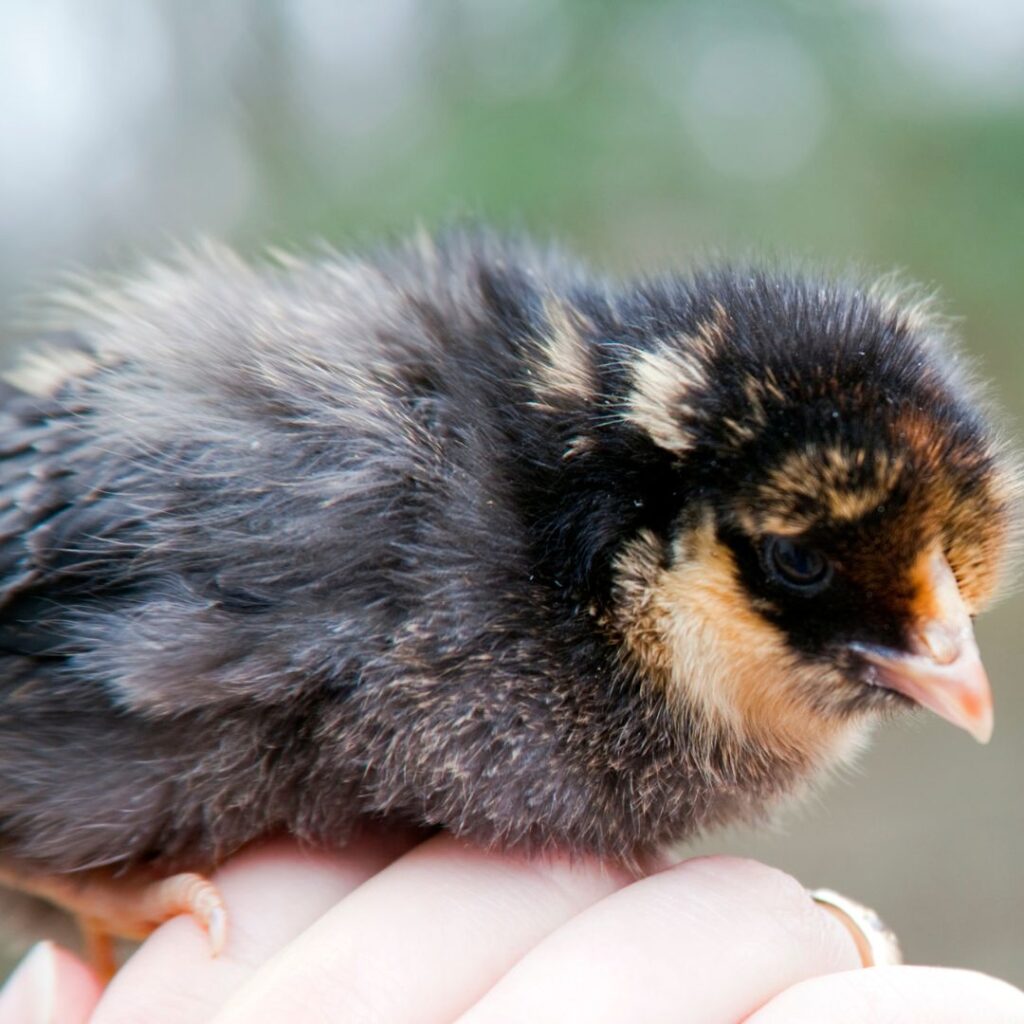
Avoid These Sources of Heat
- Clear Heat Bulbs – Use Red Heat Bulbs only. The red will discourage pecking and is also a safer source of heat. Clear bulbs will confuse a chick’s sleep patterns and cause unnecessary stress. Best to mimic the real world whenever possible.
- Wood/Coal Stove – this type of heat can be inconsistent and demands frequent monitoring to maintain optimal temperatures.
- Space Heaters – Drawing excessive energy, experiencing temperature fluctuations, and possibly having unexpected shutdowns are all risks of using a space heater. There is also a fire risk, not to mention most of these have blowers that could cause problems for the chick’s health.
Thermometer
It would be best if you had an indoor/outdoor thermometer that shows temperature and humidity. If the urine content and moisture or humidity from summer heat cause excess moisture, this can cause respiratory problems in your young bird.
Because warmth is so crucial for chicks to survive, best to keep a ‘spare’ nearby.
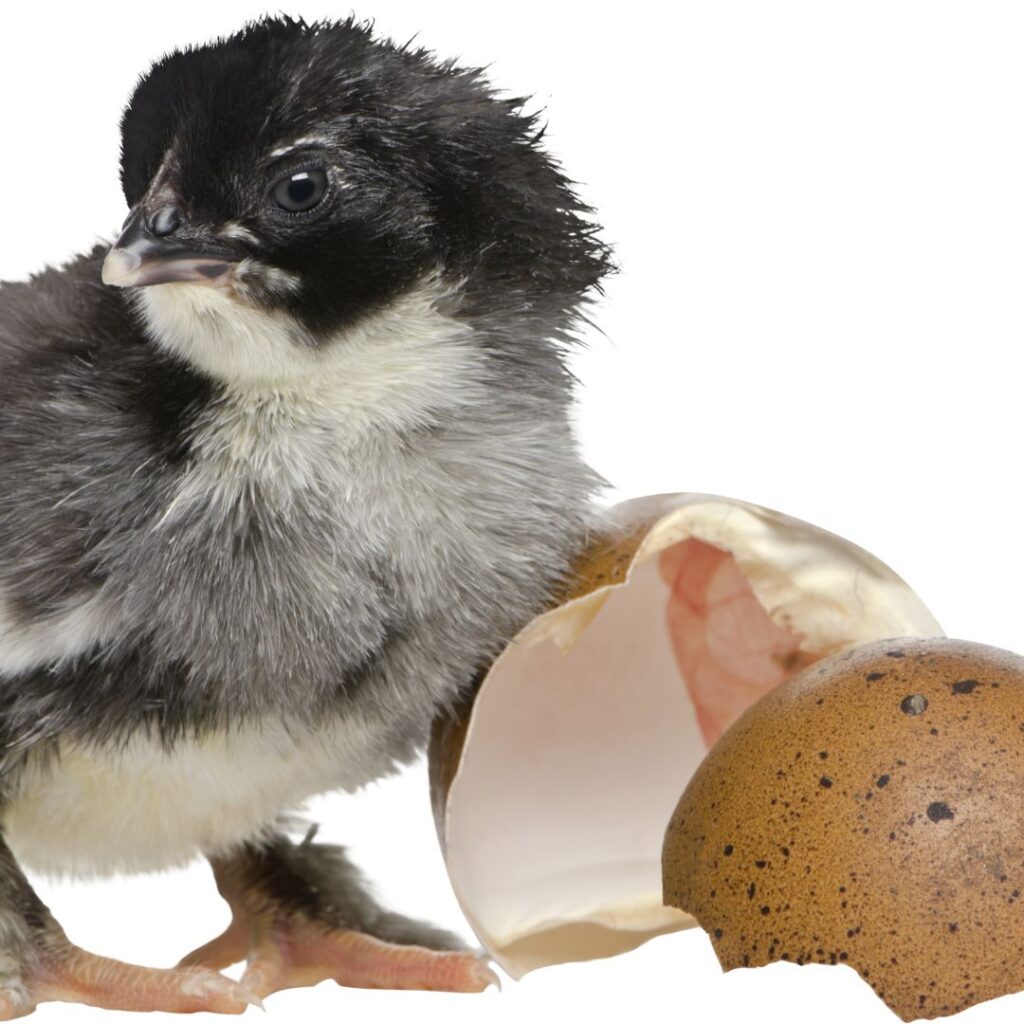
Bedding/ Litter
Pine shavings have long been the go-to choice if you’re looking for a bedding material to use in your brooder. We used shavings until this past year.
There is also another great option – compressed wood pellets. This is what we’ll be using for the foreseeable future. Pellets absorb heat from the heat source and create a warmer and cozy atmosphere for your young flock.
You’ll love how wood pellets keep the odors to a minimum and break down into bits of sawdust once they get wet – meaning less mess for you. Shavings are nowhere near as absorbent as these pelleted wonders. And for those watching their budget, pellets are economical too.
Feeder
These are relatively inexpensive. I like having two, so I can bring one in and give it a thorough cleaning, rotating the feeders daily. As baby chicks grow (quickly), they can hop on top of the feeder and poop. Cleaning feeders is an absolute must.
Feed – Chick Starter. There are medicated and non-medicated feeds. If your chicks were vaccinated at the hatchery, you wouldn’t need the medicated kind. Most baby chicks bought at hatcheries can be vaccinated.
If you’re raising chicks, it is well worth storing the feed in a metal barrel or rubber tote to keep other critters and bugs from getting into the chick’s feed. Feeds can get buggy and moldy in summer months quicker than in winter months, be sure to ask your feed supplier how fresh their feed is.

Waterer
This is another item I like to have multiples on hand. With baby chicks, I start with the smallest waterer size and add two into the brooder, so having four on hand allows me to clean them with soap and hot water in the rotating waterers. Baby chicks should be given warm water.
Roost/perch
Surprisingly, these little fluff balls will start hopping around and perching within a week or so. Having a space for them toperch is a good idea at a young age.
You can make one yourself from branches/twigs, dowels from the hardware store, or buy baby-sized perches/roosts.
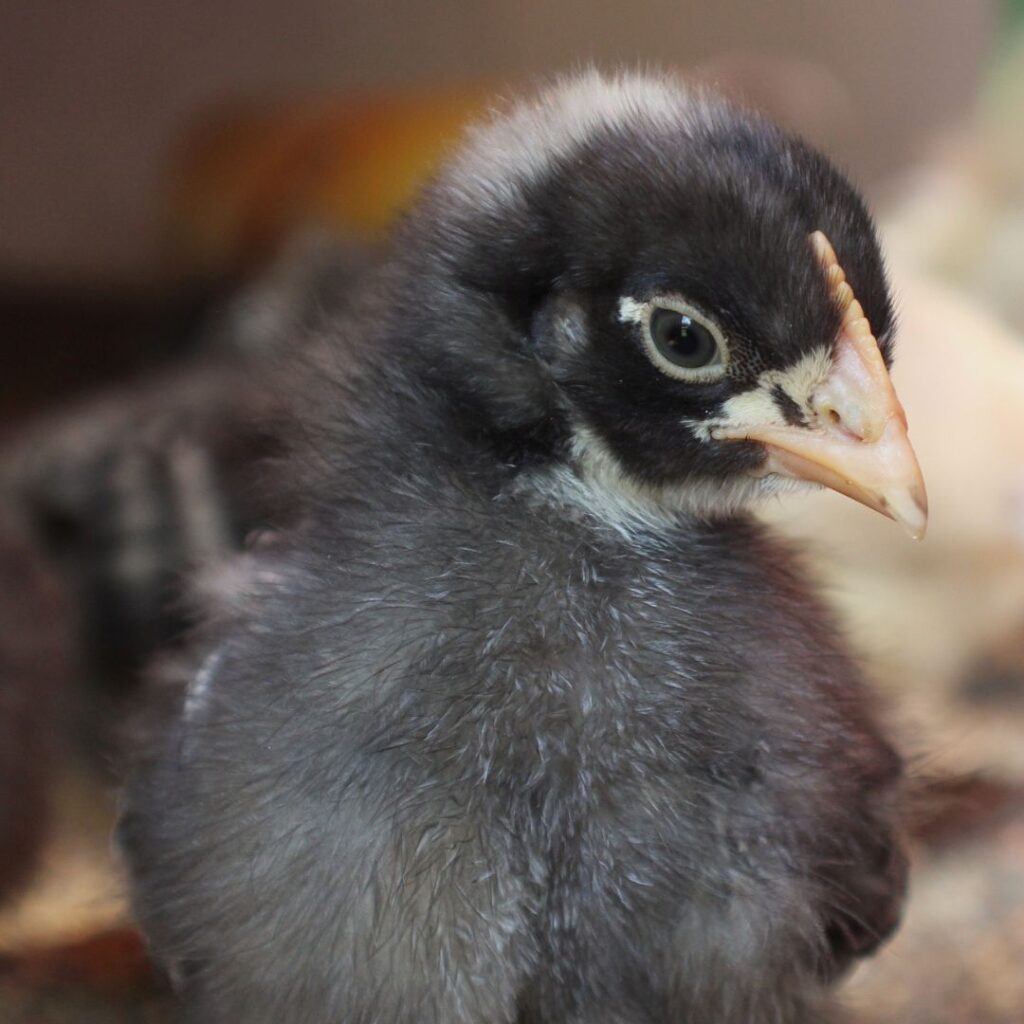
Growth Rate And Needs Of Young Chicks
Weeks 1-4 Space should be 1/2 square foot (6′) per bird. You can place a cardboard box around them at this stage to reduce the size of a larger brooder. This will increase over the brooding stage, so plan to increase the size to have 3/4 – 1 sq ft per bird later.
Day 1-3
Be sure the brooder is holding the temperature at 90-95 F.
Bedding should be pellets, paper towels, or soft shavings. Clean Daily
Prepare warm water for your young chicks with two tablespoons (per quart) of sugar. Dip beaks into sugar water, then into feed/ chick starter feed.
Check for Pasty butt; if present, use a warmer moist cloth and wipe clean. Return the bird under the heated area.
Sprinkle some feed around the floor area near the feeder (you can put clean paper towels under the feeder)

Week 1
- Temperature 90-95 F (raise or lower source of heat as needed to adjust)
- Clean the brooder daily and add fresh litter
- Add fresh warm water, and clean feed regularly throughout the day. Feeders and waterers should always be available.
- Check for Pasty butt; if present, use a moist cloth and wipe clean. Return the baby bird under the heated area.
Week 2
- Temperature 85-90 F (raise heater or lamp 2-3″). Check the thermometer regularly for heat level and humidity.
- Clean the brooder daily and add fresh litter
- Check for Pasty butt; if present, use a warmer moist cloth and wipe clean. Return the baby bird under the heated area.
- Add fresh warm water, and clean feed regularly throughout the day. Feeders and waterers should always be available.
- You can add small roosts about 2-4″ above the floor. Week 2 is also a great time to add a few small patches of lawn with dirt into the brooder for chicks to start foraging and learn new skills.
Week 3
- Temperature 80-85 F (raise heater or lamp 2-3″). Check the thermometer regularly for heat level and humidity.
- Clean the brooder daily and add fresh litter. The litter should be about 2″ thick now.
- Add fresh room temperature water, and clean feed regularly throughout the day. Feeders and waterers should always be available.
- If you haven’t already, You can add small roosts and small patches of lawn with dirt into the brooder for your young flock to start foraging and learn new skills. Remove the old grass pieces at your next brooder cleaning.
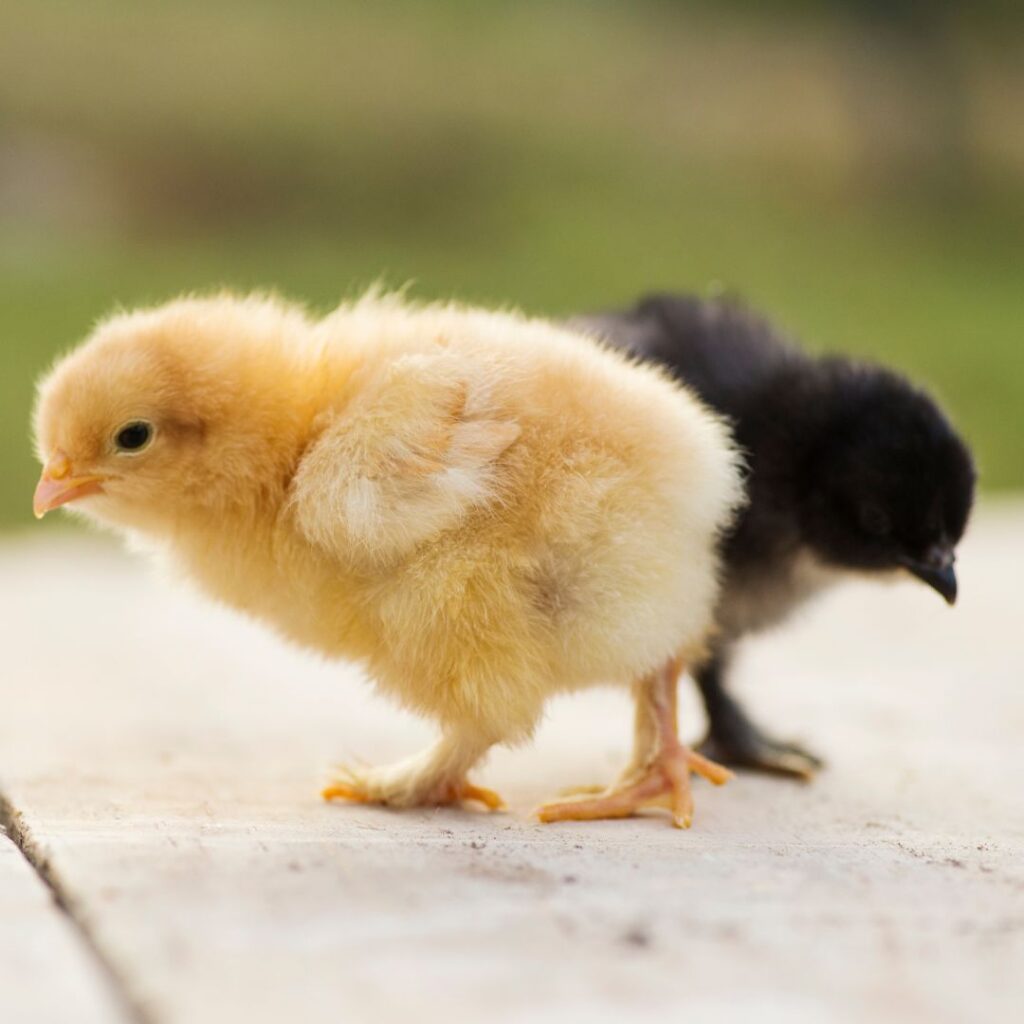
Week 4
- Increase the size of the brooder to 3/4 – 1 sq ft per chick.
- Temperature 75-80 F (raise heater or lamp 2-3″). Check the thermometer regularly for heat level and humidity.
- Clean the brooder daily and add fresh litter. The litter should be about 2″ thick now.
- Increase the size of the waterer and be sure it is lifted off the floor to accommodate chick size; you can hang it from a sturdy chain or place it on a piece of wood or cement patio block/ bricks.
- Add fresh cool water, and clean feed regularly throughout the day. Feeders and waterers should always be available.
- Change feed to a Grower Feed gradually. Start by adding 1/4 grower to chick starter then increase daily by 25%. It would be best to have your birds fully transitioned to grower feed within four days.
- Increase the feeder’s size and adjust for the chicks’ height.
- Increase the height of the roosts to approximately 6″ off the floor. Roosts should allow 4 “-6” length per bird. Chicks will start to use their body heat and huddle together on perches when they’re chilled.
- Patches of lawn with dirt into the brooder for chicks.
- If temperatures are warmer, you can bring your chicks outdoors daily to a contained area (supervised) to start foraging on the lawn. Do this in a sunny warm spot protected from overhead or ground predators. If it’s raining, keep your chicks indoors.
- Be sure to provide fresh water and feed outdoors as they learn to forage.
- Bring in your baby chicks at dusk, as this is the most natural routine for them to understand.
Week 5
Temperature 70-75 F (raise heater or lamp 2-3″). Check the thermometer regularly for heat level and humidity.
Clean the brooder daily and add fresh litter
Add fresh cool water, and clean feed regularly throughout the day. Feeders and waterers should always be available.
Your feed has been changed 100% to a Grower Feed, and everything else is provided in week 4. Continue to bring your chicks outdoors regularly on warm days.
Week 6
- Temperature 70 F (raise heater or lamp 2-3″). Check the thermometer regularly for heat level and humidity.
- Clean the brooder daily and add fresh litter
- Add fresh cool water, and clean feed regularly throughout the day. Feeders and waterers should always be available.
- Refer to everything in week 4. Continue to bring your chicks outdoors regularly on warm days.
- Your chicks are fully feathered by now and getting ready for their transition to the chicken coop.
- Start preparing your chicken coop for next week.

Can you get Chicks or Grown Chickens any time of year?
You can get Chicks and Poulets almost any time of year; however, your choice of breeds reduces drastically for winter chicks.
Before you get excited about purchasing pullets during the winter months, do a check on shipping costs. We checked mid-January 2023 and found young poults for sale at $25-50 each in breeds we like, but shipping for four birds was $125! Another reason we’ll be re-stocking our flock with baby chicks this year. Although, I am going to check poulet shipping for the fall and possibly add to our flock again.
Raising Spring Chicks
Spring is the ‘traditional’ time to raise chicks. We start our gardens, our new plantings, and even sprucing up the lawns with fertilizer and grass seed. Spring sings new growth, and raising chicks feels right.
The only trick here is to time chicks arrival for when your temperatures are closer to 55% at night. This will make heating the brooder easier to mimic warmer weather.
Spring chicks are relatively straightforward to care for. You keep them warm, clean, and fed and watch them grow. They can even venture outdoors on warmer days.
Spring also allows for more time for your birds to become fully feathered and transition to an existing flock. Come September; your poults will begin laying and you’ll get a taste of your first eggs.
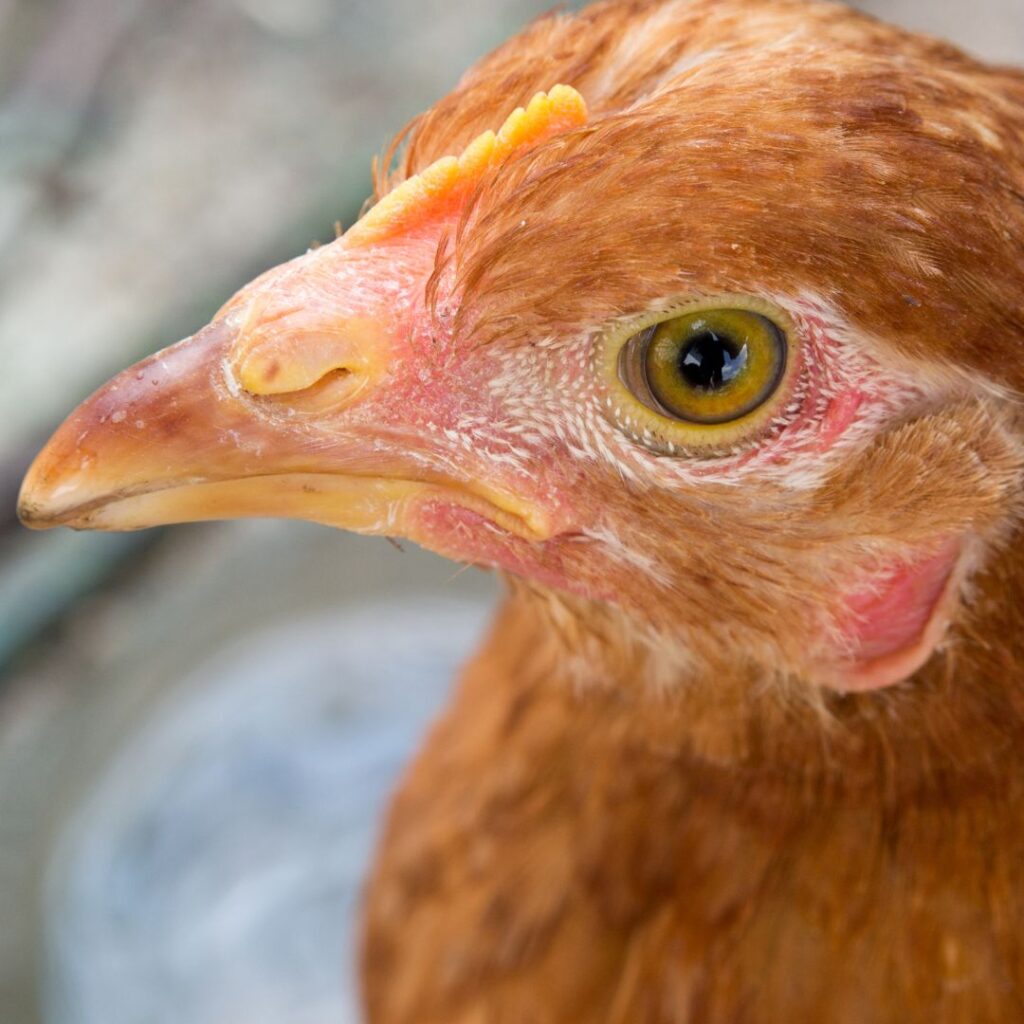
Raising Summer Chicks
Summer chicks are so much easier as far as heating goes. As far as raising chicks, summer is the ideal time. Your daytime and evening temperatures will allow for much less electricity and equipment usage.
You can bring them outdoors for more extended periods and at an earlier age, as long as temperatures and summer rain cooperate with the chicks’ daily needs.
Raising Fall Chicks
This is a seldom used but great alternative to spring and summer. By raising the chicks in early fall, you save on energy for heating and still reap the benefits of extended daylight and warm days. When you are ready to move your young flock to the coop area, it will be nearing winter and their natural ‘respite’ from egg laying.
Come spring; your young flock will have been ready for full egg production earlier than spring chicks. This fall timing also allows for your hens’ first molt to be around late fall or early winter, when they would naturally slow or stop laying eggs.
Raising Winter Chicks
Starting baby chickens in the winter requires more equipment, a longer time in a heated space, and less chance to allow for early foraging. If you live in a warm climate, this may be an alternative, but there are still daylight concerns where you need to provide warmth when it’s darker. This is the least affordable option for obvious reasons. Winter chicks shipped have a lower survival rate also. This is why you cannot buy baby chicks during the winter months at many hatcheries.
Read About Chicken Care In Winter Months Here.
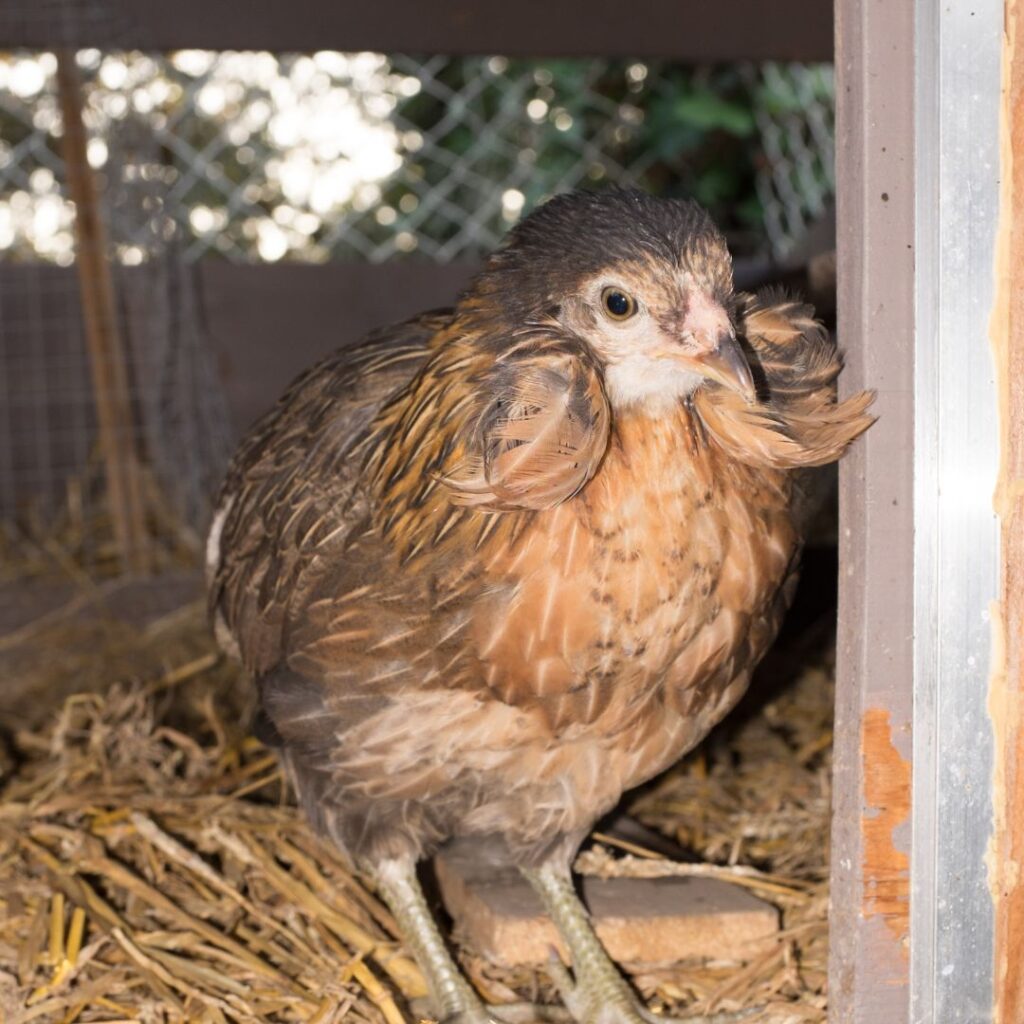
Transitioning A Young Flock To The Chicken Coop
Under no circumstances should baby chicks ever be introduced to a mature flock in chicken coops.
It’s critical to remember that baby chicks should NEVER be introduced into a flock composed of fully grown hens or older pullets. You must wait until the chickens have reached 10-12 weeks before they are fully transitioned to your existing flock.
For the best situation, you should add new chickens/pullets (chickens under a year old) when they reach approximately 12-14 weeks of age and are the size of your current flock.
Introduce new chickens to their coop and secure the top and sides of the run with fencing for 4-6 weeks. This will ensure that they adjust safely to their environment.
How To Order Chicks?
You can buy chicks online, as mail-order, chicks and some hatcheries still take phone orders. Remember, before you buy chicks, check their guarantees.
What Is A Straight Run?
You’ll choose if you want females or a straight run when you order chicks. Straight runs are non-sexed chicks, meaning you could get baby chicks that are hens or roosters when they grow up. There is no way of knowing the sex of your chicks for several weeks.
A straight run is ideal for a homestead that wishes to order chicks for future meat and eggs. They would thin their flock, use the roosters for meat birds, and keep the egg-laying hens for daily egg production.
This is also helpful with urban areas where the laws are strict about having even one rooster.
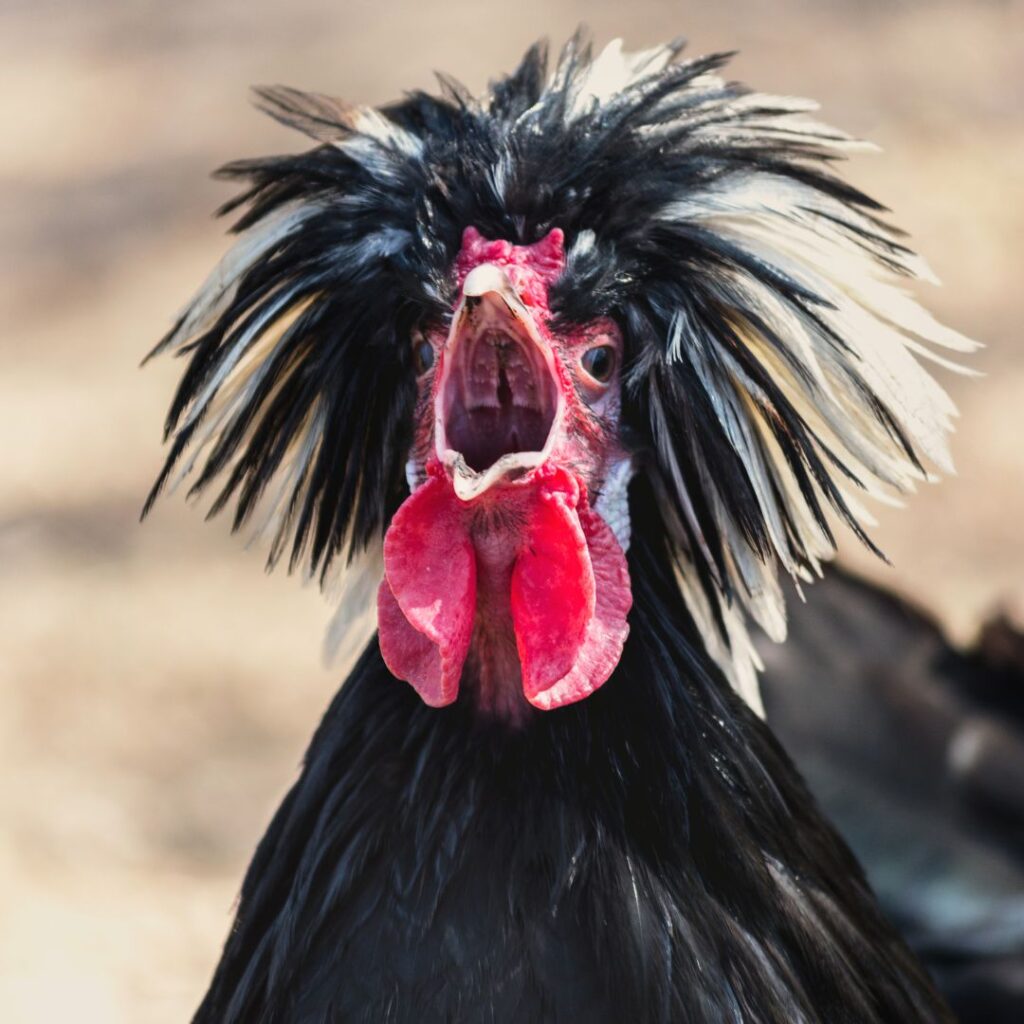
How Will My Chicks Survive The Trip To Post Office From The Hatchery?
Most hatcheries will pack 15-25 baby chicks snugly in a lined heavy corrugate box (with holes), ensuring a couple of days of warmth for their trip.
Hatcheries that offer smaller orders will pack in special containers with heat packs for their safe arrival to you (yes, there is a fee).
Buying baby chicks at a farm and animal feed store
This is a great alternative to buying larger quantities from hatcheries. Even hatcheries that sell smaller quantities factor that into their shipping.
Be sure to check with your farm and feed store if they are ordering a straight run (mixed sex) or females only. Also, ask about their guarantee is; if you receive roosters when you want only hens. Hatcheries will credit you, be sure the farm stores offer the same guarantee.
Be sure your farm and grain store knows precisely how old chicks are that you’re purchasing. Remember, there are differences in a baby chick’s care each week, and you want to ensure their proper care and protect your investment.
Buying Baby chicks vs. Poulets?
Many hatcheries sell chicks and poults, and some even sell laying hens. Aside from the difference, there is the initial cost. Baby chicks cost much less, so most people choose that option.
While Poulets cost much more, you save on heating, supplies, and feed, not to mention the time involved in caring for baby chicks. The biggest plus is you get to the egg-laying part much sooner. They are also available to purchase in much smaller quantities than baby chicks.
Poulet selections are fewer in hatcheries, while newly hatched breeds have enormous choices during peak seasons, like springtime chicks and summer chicks.
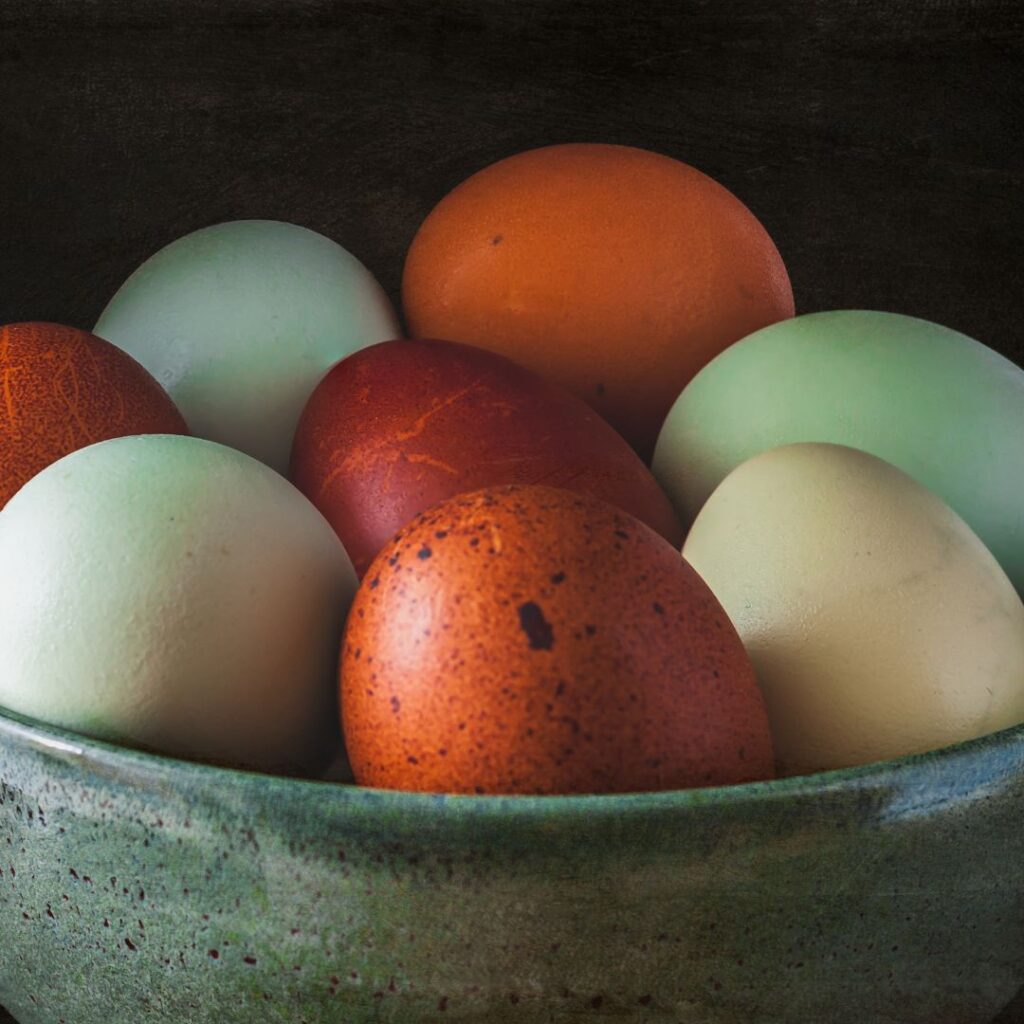
What season do chickens lay best?
Regardless of where you live in the U.S., the spring and summer are peak production times for laying hens. Some breeds and hybrids will lay eggs during the winter better than others.
5 Hints Your Hen Is Ready For Egg Production
On average, hens will have their first egg around 16-20 weeks, but some breeds don’t lay until later (large breeds like Brahma and Jersey Giants).
Check the ‘breed information’ for maturity information. If you are wondering if your hen is about to lay her first egg, here are some things to watch for:
- The chicken starts to show more interest in their nesting box.
- Your hen becomes a bit louder and even more chatty in a more excited way.
- Squatting – like she’s about to lay her first egg
- Combs and wattles are enlarged and brighter.
- Your chicken is hungrier than usual.
Curious how long your hens will lay eggs in their lifetime? Read about how long chickens lay eggs in this link.
Read more here about why chickens stop laying eggs.
Read about chickens laying eggs in the winter (year-round) here.
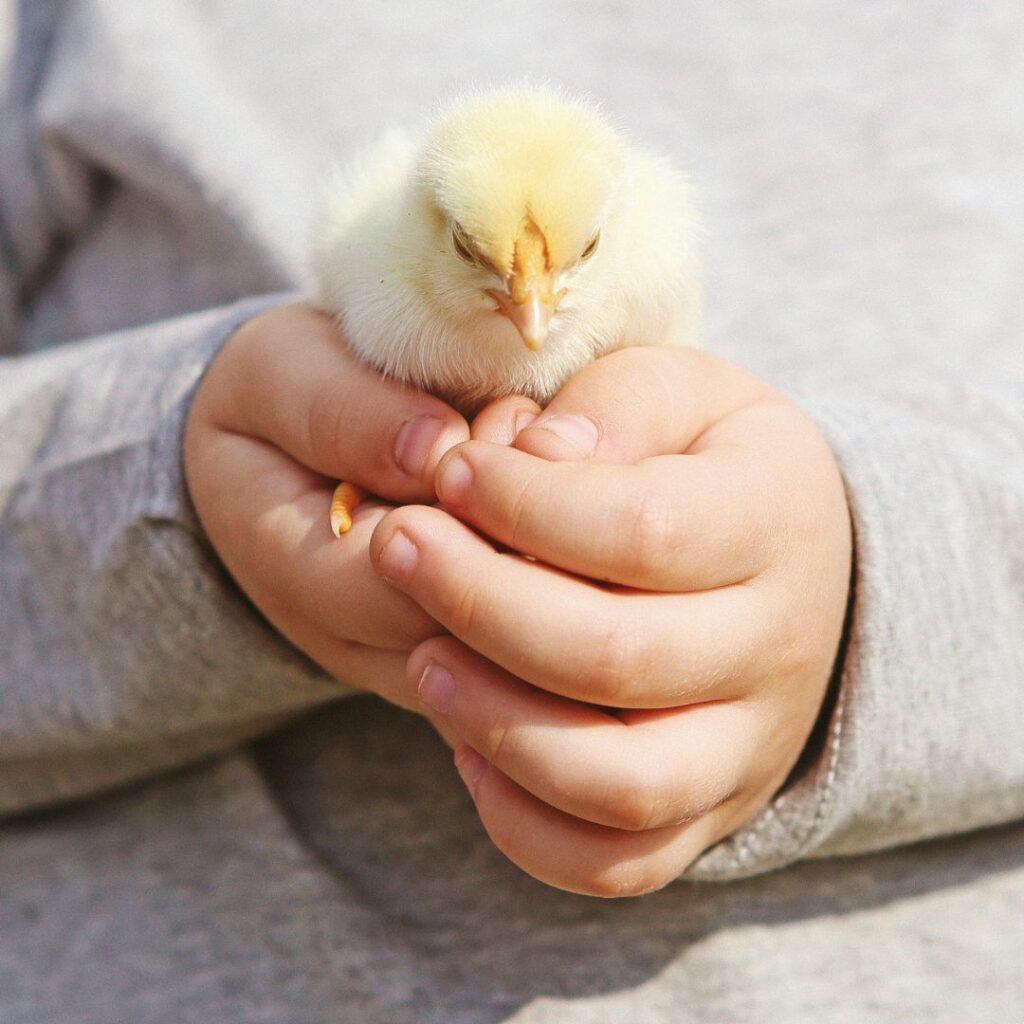
Conclusion
Raising baby chicks can be a rewarding experience – make sure you plan by knowing when is the best time to purchase them; how long it will take before they reach adulthood; what supplies are necessary; and how often you should monitor their health status. With these tips in mind, you’ll be able to raise happy, healthy chickens and have farm-fresh eggs in no time.
FAQ:
How long is the chick stage?
This stage of care lasts for six weeks.
How many chickens do you need to get a dozen eggs a week?
Hens like Rhode Island Reds, Golden Comets, Black Stars, Easter Eggers (and more)are excellent layers. 2 hens x 5-7 eggs per week = 12-14 eggs per week.
What is the best chicken for beginners?
A great beginner bird that is tolerant to all kinds of weather is the popular Rhode Island Red or breeds with Rhode Island Reds or Whites bred into them. These are incredibly hardy and tolerate new chicken owners very well with their climate and disease resilience.
How many chicks should I start with?
You need to start with a minimum of 3 chickens. The rest depends on the size of your family or how many eggs you’d like to have a week. Look at some of our breed articles. You want to consider if the chicken is cold, hardy, pet friendly, and quiet if you live in an urban area and its egg production.
Is it better to start with chicks or poulets?
There are considerable benefits to both, and honestly, after the initial investment of supplies, you only need to purchase feed for future chicks. Introducing young birds to an established flock can be tricky when raising chickens. Poulets can help lessen that time frame and help you grow your existing egg-laying flock quicker.
what age can chickens eat apples?
Try starting them out with apple sauce (no peels or seeds) and gradually leave cooked diced apples (which are softer) then up to diced apples until they are about 4 months old.

